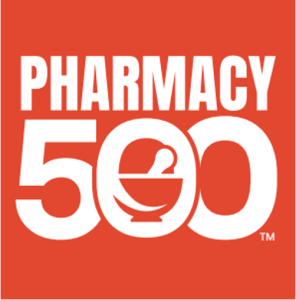Contributor: Chris Cella, R.Ph., Vice President, RxOwnership
What makes a pharmacist want to buy their own independent pharmacy? In one word, freedom. You want to practice pharmacy on your own terms. And you want to do more for the health of your patients. But where you are now might not give you enough time or opportunity to do that.
You’re not alone. Many pharmacists feel the same way. When it comes time to buy a pharmacy, there are a few key things to keep in mind. The first step is to determine your goals and what you hope to accomplish in the purchase. Are you looking to start or expand? Are you looking for a particular location? Are you familiar with the pharmacy landscape and the current state of the industry? The following is a list of some of the most important considerations when looking to buy a pharmacy.
PUT TOGETHER A PRELIMINARY CHECKLIST
Buying an independent pharmacy should be a detailed, thoughtful process. Before buying a pharmacy, put together a checklist of things you’ll need before you start looking.
The first thing on your checklist should be a systematic way to know which pharmacies are for sale. It’s not like buying a house. Pharmacy owners aren’t putting for-sale signs in their windows or on the street in front of their stores, it’s a secretive process. Owners don’t want their patients to know because they might take their business elsewhere. Owners don’t want employees to know because they might leave. Both reasons could lessen the potential worth of a pharmacy owner’s business.
If you’re a pharmacist interested in buying a pharmacy, you can:
• Work with a third-party vendor that maintains a propriety database of pharmacies.
• Check the pharmacy sales listings on national and state pharmacy association websites.
• Hire a broker.
• Network with your peers and let them know you’re in the market. Word-of-mouth that you are looking can be a good strategy. Network with your peers and let them know you’re in the market. Word-of-mouth that you are looking can be a good strategy.
Next on your checklist should be assembling a team of trusted advisors. Don’t go through this process alone. Your team should include some, if not all, of the following people:
• An industry subject-matter-expert (SME) who’s experienced in buying and selling independent pharmacies.
• An accountant experienced in pharmacy financials.
• A lawyer who can review and handle all your contracts and contract language.
• A banker who can work with you to identify the best financing options.
• A pharmacy owner who can give you support and advice from their own experience.
Next on your checklist should be financing. A lender likely won’t pre-approve you for a loan because the purchase price can vary significantly based on the size and value of the pharmacy that you end up buying. But a lender will want to see how much money you have to put toward a down payment (skin in the game). They’ll likely want to see a minimum of 10% of the total purchase price.
Your financing options and considerations may include one or a combination of the following:
• A conventional loan.
• A small business administration (SBA) loan.
• A loan from a pharmaceutical supplier or wholesaler.
• Owner hold back note.
• A personal loan from family or friends.
With those three things in place — a list of available pharmacies, a team of advisors, and a range of viable financing options — you’re ready to go shopping.
IDENTIFY THE PHARMACY THAT’S RIGHT FOR YOU
Choosing the right pharmacy to buy is a combination of art and science. The science is the business side of your decision. You need to dig deep into the pharmacy’s financial statements. Before you make an offer, you need to know:
• How profitable the business is.
• Whether revenue is trending up or down.
• The potential for growing the business.
• Whether the owner incurs expenses that you, as the new owner, wouldn’t incur.
• Opportunities for cost savings.
• The volume and mix of prescriptions.
• The payer mix of the pharmacy’s patients.
• Which long-term care contracts (if any) are in place, are expiring, or need to be renewed.
Go through line by line so you know exactly what you’re buying. You should research at least three years’ worth of financial documents.
The art of buying a pharmacy is the personal side of your decision. This is about you and your patients. Are you going to move to the same town as the pharmacy? Can you commute to the pharmacy from where you live now? Is this where you want to raise your family? Is there community support for the pharmacy? Are there other businesses in town that help support the pharmacy? Is this where you want to spend most of your time?
The most important questions to ask — and the ones that likely sparked your desire to buy your own pharmacy business are: Is this the pharmacy that gives me the opportunity to make the changes that I want to make? Will it let me practice pharmacy at the top of my license, so I can help my patients lead healthier lives?
You’ll know it in your gut. And if the answers are yes, then you’ll know it’s the right pharmacy for you.






